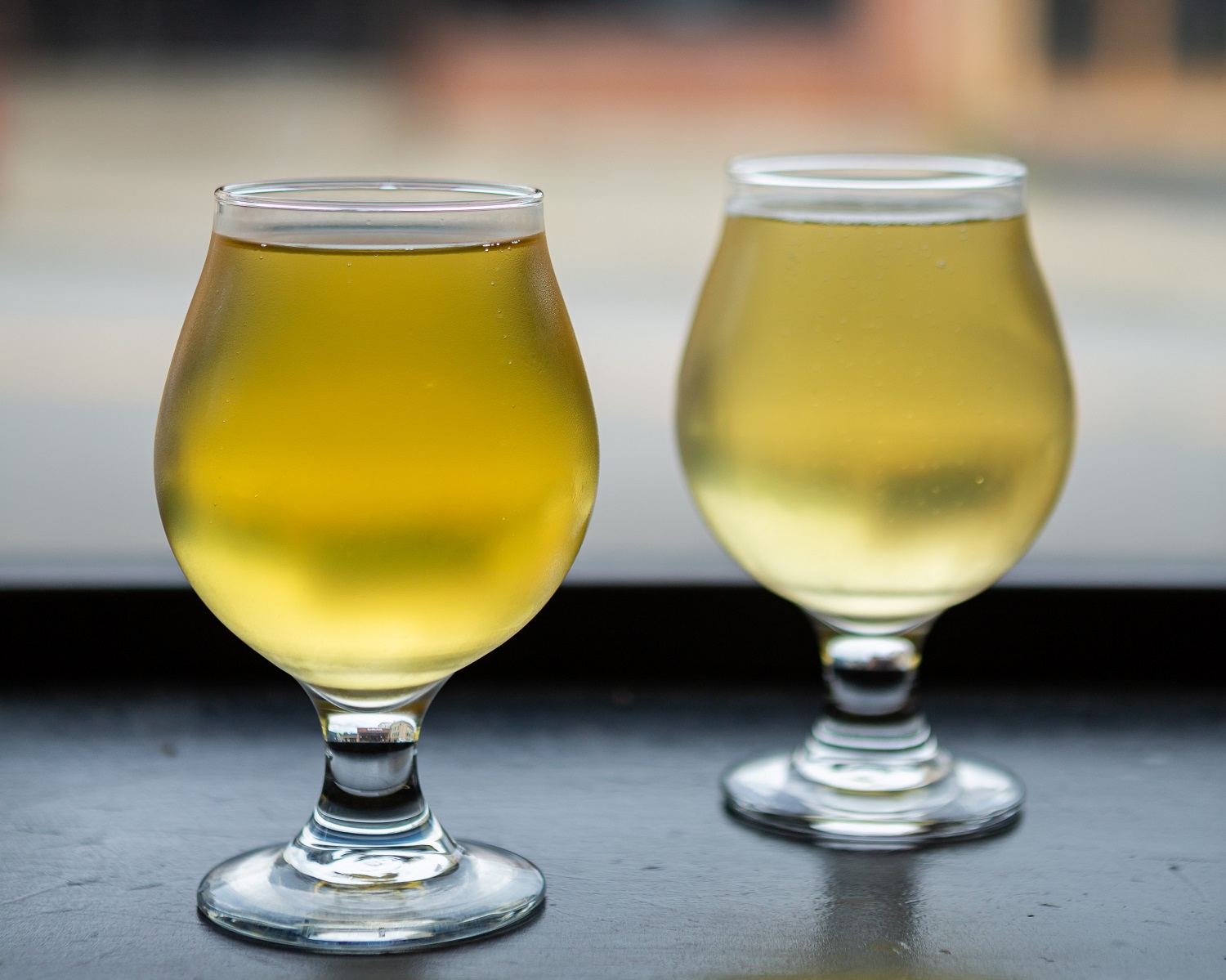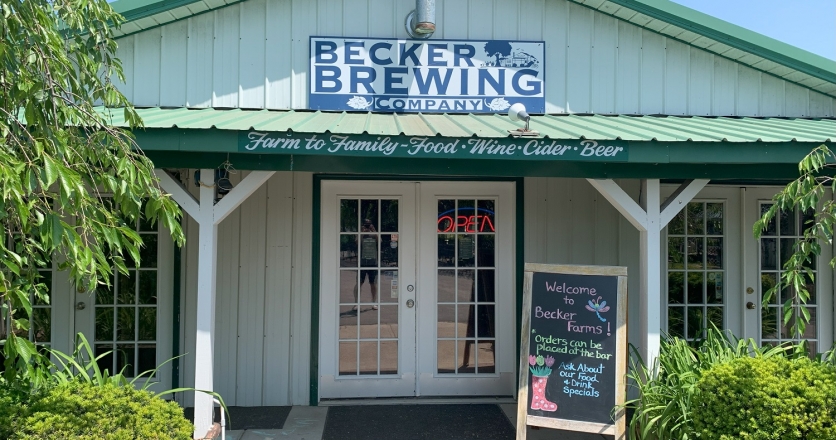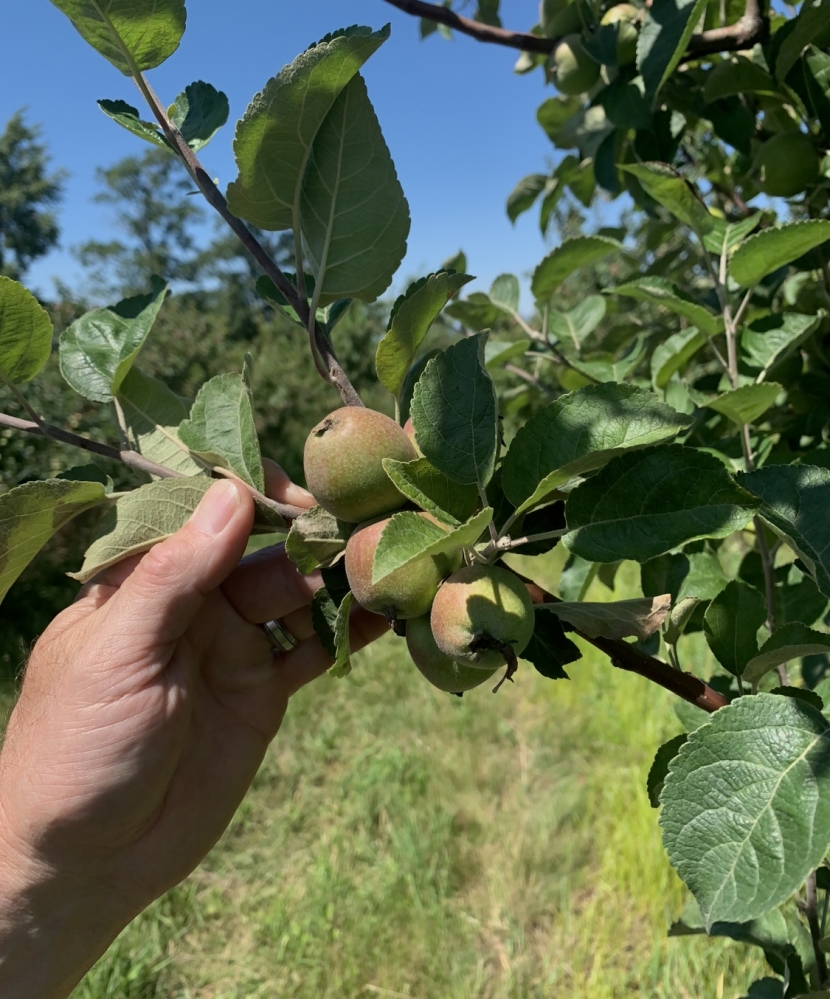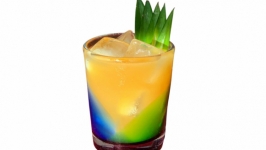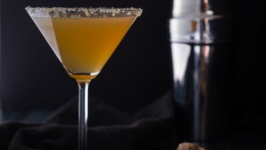Searching for Artisanal Hard Cider in Western NY
As Covid restrictions lifted, a friend and I were looking to mail order bottles of artisanal ciders from the Finger Lakes—with some costing $30 for a 750-ml bottle—when we decided: Instead of also paying postage, why not just go and make a weekend out of it?
For the last few years, my friend and our families have made trips to the Finger Lakes to find and purchase lovingly crafted artisanal ciders made with heirloom apples coming out of cideries like Redbyrd Orchard, South Hill, New York Cider Company, and others. The Saturdays of our visits start with a trip to the Ithaca Farmers’ Market. After a tour of the nearby cideries, our day ends back at a local Airbnb with dinner and bottles of cider we collected on our tour.
Here in Western New York, the dry, tannic, funky and deeply flavored ciders of the Finger Lakes are hard to come by, and I decided to find out what the heck is going on. Through some conversations and a bit of investigation, I found that we could—could—be poised for an artisanal cider boom in Western New York and the rest of the state.
On a recent hot summer day, I set off for Becker Farms in Gasport. As an agritourism and education destination, Becker Farms is a great place to take the pulse of the general public and which ciders they like to drink. I wanted to find out: Are consumers in this region seeking artisanal ciders?
Upon arriving, I was shepherded into the farm’s brewery and cidermaking facility, where I was given a sample of Becker Brewing’s very popular Concord Hard Cider, a semi-sweet cider made with Crispin, Idared, Red Delicious, SnapDragon and Macoun apples, plus grape juices. Even I, a dry cider fan, had to admit: This cider had depth-of-flavor and complexity. It was a promising showing for local cider, and it proves cider doesn’t need to be dry to be good.
“We’ve always been able to make good, sweet ciders by doing blends,” says Andres Vizcarra, cidermaker at the farm’s Becker Brewing Company. “With this blend, you get the earthiness of the apples paired with the structure and jammy notes of Concord grapes.”
A bit of research reveals that cidermaking is an American tradition that goes back centuries. Cider-specific apple trees were planted in the Massachusetts Bay Colony within a decade after the Mayflower landed. Made with heirloom apples brought over from Europe, hard cider became a common beverage throughout largely-rural colonial America. In fact, it was tradition to offer house guests a glass of cider when they arrived. So, what happened to artisanal cider?
There’s a theory for why cider made with heirloom apples fell off the radar in America, and it goes like this: When Prohibition went into effect, bitter and tart heirloom cider apples suddenly became worthless. As a result, farmers chopped down heirloom apple trees and planted sweet varieties of “dessert” or “culinary” apples—such as Red Delicious and Cortland—that could be made into juice and apple pies. When hard cider started to become popular again in the late 20th century, the only apples to work with were culinary apples.
It’s a good theory. Unfortunately, it’s made up, according to multiple sources. There’s only one documented incident of a cider orchard being chopped down, and that likely had to do with some kind of dispute between farmers. A more probable explanation comes from the combination of American urbanization and logistics. When the U.S. went through massive urbanization in the late 18th and early 19th centuries, the logistics of transporting apples or apple juice made urban cidermaking more difficult. On the other hand, grains and hops used to brew beer could more easily make the trip into urban centers.
Meanwhile, in Europe, cidermaking took a path that more closely resembles winemaking. In late 18th century Great Britain, farmers felt pressure to support the Napoleonic war effort by increasing livestock and grain production, according to the Great British Chefs website. This pressure caused some farmers to neglect their orchards. Those that remained became increasingly focused on making cheap, easy-drinking cider that would have mass appeal.
Unlike Great Britain, Spain and France were able to build up artisanal cider industries based on rural traditions. In Spain, cideries like El Gaitero say they were motivated to scale up production to cater to demand from Spanish expats living in the Americas. In France, complaints about inconsistent quality reportedly led to the creation of cider laboratories that established strict, science-based production practices.
Stateside, we’re still playing catchup as the global supply chain has opened up access to high-quality ciders from England, Spain and France. Increasingly, artisanal cider fans like me are demanding American ciders made with heirloom apples, which can have the same level of complexity as a good wine, or a well-made craft beer.
“New York cider is still in the very early stage of its maturity,” says Greg Peck, an associate professor of horticulture at Cornell University and part of the Cornell Cooperative Extension’s Hard Cider Program Work Team. “We just published a survey that found there is way more demand for cider-specific apple varieties—with high tannins, high acid levels and other chemical attributes that make them unique for cider production—than there is supply. In other words, there just aren’t enough of these specialized varieties in the ground.”
This lack of apple variety puts local cideries in a bind. People want more options, but planting apples is a massive investment, costing from $20,000 to $25,000 an acre. New trees take at least three years to start producing fruit. Also, many cideries don’t even produce their own apples: They source commodity cider juice from a commercial farm and put it through a fermentation process.
To meet the demand for variety, local cideries are taking their cues from the craft beer industry and incorporating different additives. In essence, it’s a race sideways to produce as much variety as possible by blending various juices and using different techniques on cider made from culinary apples. Some cideries are also leaning into branding as a way to separate themselves in a market that’s increasingly competitive.
At some point, the pressures to develop new flavors and maintain a unique brand identity will likely force some producers to stop vying for space on the supermarket shelf. In June, Blackbird Cider Works announced that the company was being sold to Resurgence Brewing by its parent company, Donovan Orchards. Scott Donovan, founder of Blackbird and owner of Donovan Orchards, explains, “we were putting so much effort into designing cans and marketing Blackbird, but the returns were low.”
“The distributors want us to produce many different flavors. You know, you can only do so much flavor adding before you don’t have genuine cider anymore. But people do like it and there is a market for that kind of cider,” he adds.
While Resurgence acquired the Blackbird brand, Donovan Orchards retained all of its facilities, including an on-site tasting room and a cider hall in Buffalo’s Black Rock neighborhood. The plan is to pivot to a more artisanal approach with a new venture: Donovan Estates Orchards.
A few weeks after my visit to Becker Farms, I paid a visit to Donovan Orchards to learn about this new venture and what it might mean for local artisanal cider. The orchards are located on a beautiful tract of real estate, literally a stone’s throw from Lake Ontario in Barker, NY. In addition to culinary apples like Jonagold and Empire, the orchard also produces both American and English heritage apples, like Rhode Island Greening, Kingston Black, Northern Spy, Dabinett and Tremlett’s Bitter. The estate’s cidery uses these apples to make ciders full of tannins and spice that go for just under $30 for a 750 milliliter bottle. Some of these ciders are aged in oak or bourbon barrels to give them wine or spirit-like qualities.
In addition to growers like Donovan Estates leaning toward heirloom apples, the Cornell Cooperative Extension is making significant progress on the research side. It recently acquired popular harvesting machines from Europe that shake cider apples from the trees so they can be quickly swept off the ground.
“About one-third of the annual operating budget for an apple orchard budget is harvest labor,” Peck says. “Culinary apples bound for the supermarket must be picked by hand to prevent bruises or dents in the skin. Hand-picking isn’t necessary with cider apples because they are milled and pressed.
“We’re trialing the machines on different orchards and trees,” Peck adds. “We’re trying to learn about them but also teach our growers how to use these machines to increase the availability of specialized apples and reduce the costs of growing them.”
Given the market opportunity, increased interest from growers, and potential efficiency improvements in the pipeline, we could be looking at an artisanal cider boom in the next five to 10 years. The pace of that boom will likely depend on how quickly apple growers pivot to growing cider-specific heirloom apples.
Back at Becker Farms, Vizcarra tells me he’s a big fan of artisanal ciders and admits to being envious of other cideries that are making investments in heirloom apples. For him, pursuing transcendent artisanal cider is as much about personal taste as it is about opportunity.
“There’s a whole market for dry, tart beverages that isn’t as catered to that much,” he says, clearly referring to people like me. “While we don’t go through as much volume with drier ciders as we do sweet, the people who really like dry cider, really like it.”


